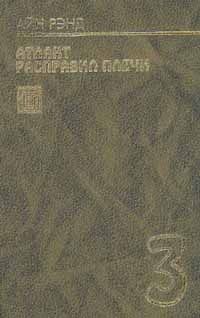Сборник статей - Небесные Посредники. Иудейские Истоки Ранней Христологии
274
Итхамар Грюнвалд обращает внимание на то, что «в свете текстуальной критики эта книга [Третья книга Еноха] связана с древней енохической традицией, и, по-видимому, несмотря на ее позднюю датировку, в ней содержится в больших количествах материал, происхождение которого следует искать в литературе апокалиптической енохической традиции». Этот исследователь также высказывает замечание о том, что «в Третьей книге Еноха сохранены многие изначальные черты апокалиптической енохической традиции, несмотря на то, что им приданы формы, позднее ставшие частью традиции Меркавы». Gruenwald, Apocalyptic and Merkavah Mysticism, 192.
275
H. Odeberg, 3 Enoch or the Hebrew Book of Enoch (New York: KTAV, 1973); Alexander, «3 Enoch»; C. Mopsik, Le Livre hebreu d’Hdnoch ou Livre despalais (Paris: Verdier, 1989).
276
C. H. T. Fletcher-Louis, Luke-Acts: Angels, Christology and Soteriology (WUNT, 2.94; Tribingen: Mohr-Siebeck, 1997) 156. См. также M. Himmelfarb, «The Experience of the Visionary and Genre in the Ascension of Isaiah 6–11 and the Apocalypse of Paul,» in: Early Christian Apocalypticism: Genre and Social Setting (ed. A. Y. Collins; Semeia, 36; Decatur, GA: Scholars, 1986) 97-111, esp. 102.
277
О Моисее в преданиях см.: E. L. Allen, «Jesus and Moses in the New Testament,» ExpTimes 67 (1955–56) 104–6; R. Bloch, «Moise dans la tradition rabbinique,» in: Morse, I’homme de!’alliance (ed. H. Cazelles; Tounai, New York: Desclee, 1955) 93-167; C. Chavasse, «Jesus: Christ and Moses,» Theol 54 (1951) 244-50;G. W. Coats, Moses: Heroic Man, Man of God (JSOTSup, 57; Sheffield, Sheffield Academic Press, 1988); M. R. D’Angelo, Moses in the Letter to the Hebrews (SBLDS, 42; Missoula, MT: Scholars, 1979); C. Fletcher-Louis, Luke-Acts; idem, «4Q374: A Discourse on the Sinai Tradition: The Deification of Moses and Early Christianity,» DSD 3 (1996) 236–252; idem, All the Glory of Adam: Liturgical Anthropology in the Dead Sea Scrolls (STDJ, 42; Leiden: Brill, 2002) 136ft'; J. Fossum, The Name of God and the Angel of the Lord: Samaritan and Jewish Concepts of Intermediation and the Origin of Gnosticism (WUNT, 36; Thbingen: Mohr-Siebeck, 1985) 90–94; E. Grasser, «Mose und Jesus: Zur Auslegung von Hebr 3:1–6,» ZNW75 (1984) 2-23; D. M. Hay, «Moses through New Testament Spectacles,» Int 44 (1990) 240–252; S. J. Hafemann, «Moses in the Apocrypha and Pseudepigrapha: A Survey,» JSP 7 (1990) 79-104; C. R. Holladay, «The Portrait of Moses in Ezekiel the Tragedian,» SBLSP (1976) 44752; P. W. van der Horst, «Moses’ Throne Vision in Ezekiel the Dramatist,» JJS 34 (1983) 21–29; idem, «Some Notes on the Exagoge of Ezekiel,» Mnemosyne 37 (1984) 364-5; L. Hurtado, One God, One Lord: Early Christian Devotion and Ancient Jewish Monotheism (Philadelphia: Fortress Press, 1988) 58ff; H. Jacobsen, The Exagoge of Ezekiel (Cambridge: Cambridge University Press, 1983); P. R. Jones, «The Figure of Moses as a Heuristic Device for Understanding the Pastoral Intent of Hebrews,» RevExp 76 (1979) 95-107; K. Kuiper, «Le poete juif Ezechiel,» Revue des etudes juives 46 (1903) 174ft'; W. A. Meeks, «Moses as God and King,» in: Religions in Antiquity: Essays in Memory of Erwin Ramsdell Goodenough (ed. J. Neusner; Studies in the History of Religions; Supplements to Numen, 14; Leiden: Brill, 1968) 354–371; idem, The Prophet-King: Moses Traditions and the Johannine Christology (SNT, 14; Leiden: Brill, 1967); A. Orlov, «Ex 33 on God’s Face: A Lesson from the Enochic Tradition,» SBLSP 39 (2000) 130–147; A. Schalit, Untersuchungen zur Assumptio Mosis (Arbeiten zur Literatur und Geschichte des hellenistischen Judentums, 17; Leiden: Brill, 1989); J. P. Schultz, «Angelic Opposition to the Ascension of Moses and the Revelation of the Law,» JQR 61 (1970-71) 282–307; J. Tromp, The Assumption of Moses: A Critical Edition with Commentary (SVTP, 10; Leiden: Brill, 1993); R. Van De Water, «Moses’ Exaltation: Pre-Christian?» JSP 21 (2000) 59–69.
278
О Ное в преданиях см: M. Bernstein, «Noah and the Flood at Qumran,» The Provo International Conference on the Dead Sea Scrolls: Technological Innovations, New Texts, and Reformulated Issues (eds. D.W. Parry and E. Ulrich; STDJ, 30; Leiden: Brill, 1999) 199–231; D. Dimant, «Noah in Early Jewish Literature,» Biblical Figures Outside the Bible (eds. M.E. Stone and T.A. Bergren; Harrisburg: Trinity Press International, 1998) 123-50; C. Fletcher-Louis, All the Glory of Adam: Liturgical Anthropology in the Dead Sea Scrolls (STDJ, 42; Leiden: Brill, 2002); F. Garcia Martinez, Qumran and Apocalyptic (STDJ, 9; Leiden: Brill, 1992) 24–44; F. Garcia Martinez, «Interpretation of the Flood in the Dead Sea Scrolls,» Interpretations of the Flood (eds. F. Garcia Martinez and G.P. Luttikhuizen; TBN 1; Leiden: Brill, 1998) 86-108; H. Kvanvig, Roots of Apocalyptic. The Mesopotamian Background of the Enoch Figure and the Son of Man (WMANT 61; Neukirchen-Vluyn: Neukirchener Verlag, 1988) 242-54; J. Lewis, A Study of the Interpretation of Noah and the Flood in Jewish and Christian Literature (Leiden: Brill, 1968); Noah and His Book(s) (eds. M. Stone, A. Amihay, V. Hillel; Atlanta: Scholars, 2010); D.M. Peters, Noah Traditions in the Dead Sea Scrolls: Conversations and Controversies of Antiquity (Atlanta: Scholars, 2008); J. Reeves, «Utnapishtim in the Book of Giants?» JBL 12 (1993) 110-15; J.M. Scott, «Geographic Aspects of Noachic Materials in the Scrolls of Qumran,» The Scrolls and the Scriptures: Qumran Fifty Years After (eds. S.E. Porter and C.E. Evans; JSPS 26; Sheffield: Sheffield Academic Press, 1997) 368-81; R.C. Steiner, «The Heading of the Book of the Words of Noah on a Fragment of the Genesis Apocryphon: New Light on a 'Lost' Work,» DSD 2 (1995) 66–71; M. Stone, «The Axis of History at Qumran,» Pseudepigraphic Perspectives: The Apocrypha and the Pseudepigrapha in Light of the Dead Sea Scrolls (eds. E. Chazon and M. E. Stone; STDJ 31; Leiden: Brill, 1999) 133-49; M. Stone, «Noah, Books of,» Encyclopaedia Judaica (Jerusalem: Keter, 1971) 12.1198; J. VanderKam, «The Righteousness of Noah,» Ideal Figures in Ancient Judaism: Profiles and Paradigms (eds. J. J. Collins and G.W.E. Nickelsburg; SBLSCS 12; Chico: Scholars Press, 1980) 13–32; J. VanderKam, «The Birth of Noah,» Intertestamental Essays in Honor of Josef Tadeusz Milik (ed. Z.J. Kapera; Qumranica Mogilanensia 6; Krakow: The Enigma Press, 1992) 213-31; C. Werman, «Qumran and the Book of Noah» Pseudepigraphic Perspectives: The Apocrypha and the Pseudepigrapha in Light of the Dead Sea Scrolls (eds. E. Chazon and M. E. Stone; STDJ 31; Leiden: Brill, 1999) 171-81.
279
Александер высказывает предположение о том, что «образ Метатрона в Третьей книге Еноха, по-видимому, вобрал в себя образы трех изначально никак не связанных друг с другом персонажей: Еноха, Иаоила/Малого Яхве и Михаила/Метатрона. Нам только остается догадываться о том, как и почему эти концепции были объединены, однако небезосновательным было бы предположить, что Енох, Иаоил и Метатрон постепенно независимо друг от друга стали представляться настолько похожими в небесной иерархии, что в общине или группе общин, наследовавших подобного рода традиции, религиозное сознание не могло противостоять искушению упростить эти разнородные элементы, соединив все три образа в один». Alexander, «The Historical Settings of the Hebrew Book of Enoch,» 163.
280
Об Адаме в преданиях см. D.H. Aaron, «Shedding Light on God’s Body in Rabbinic Midrashim: Reflections on the Theory of a Luminous Adam,» HTR 90 (1997) 299–314; S. Brock, «Clothing Metaphors as a Means of Theological Expression in Syriac Tradition,» in: Typus, Symbol, Allegorie bei den ostlichen Vatern und ihren Parallelen im Mittelalter (ed. M. Schmidt; EB, 4; Regensburg: Friedrich Pustet, 1982) 11–40; A.D. DeConick and J. Fossum, «Stripped before God: A New Interpretation of Logion 37 in the Gospel of Thomas,» VC 45 (1991) 123–150 at 141; N.A. Dahl and D. Hellholm, «Garment-Metaphors: The Old and the New Human Being,» in: Antiquity and Humanity: Essays on Ancient Religion and Philosophy: Presented to Hans Dieter Betz on his 70h Birthday (eds. A.Yarbro Collins and M.M. Mitchell; Tflbingen: Mohr-Siebeck, 2001) 139–158; A. Goshen-Gottstein, «The Body as Image of God in Rabbinic Literature,» HTR 87 (1994) 171-95; L.L. Grabbe, «'Better Watch Your Back, Adam': Another Adam and Eve Tradition in Second Temple Judaism,» in: New Perspectives on 2 Enoch: No Longer Slavonic Only (eds. A. Orlov, G. Boccaccini, J. Zurawski; Studia Judaeoslavica, 4; Leiden: Brill, 2012) 273–282; J. R. Levison, «Adam As a Mediatorial Figure in Second Temple Jewish Literature,» in: New Perspectives on 2 Enoch: No Longer Slavonic Only (eds. A. Orlov, G. Boccaccini, J. Zurawski; Studia Judaeoslavica, 4; Leiden: Brill, 2012) 247–272; J. Magliano– Tromp, «Adamic Traditions in 2 Enoch and in the Books of Adam and Eve,» in: New Perspectives on 2 Enoch: No Longer Slavonic Only (eds. A. Orlov, G. Boccaccini, J. Zurawski; Studia Judaeoslavica, 4; Leiden: Brill, 2012) 283–304; B. Murmelstein, «Adam, ein Beitrag zur Messiaslehre, " WZKM 35 (1928) 242–275 at 255; Rubin and Kosman, «The Clothing of the Primordial Adam as a Symbol of Apocalyptic Time in the Midrashic Sources,» 155–174; J.Z. Smith, «The Garments of Shame,» HR 5 (1965/1966) 217–238; A. Toepel, «Adamic Traditions in Early Christian and Rabbinic Literature,» in: New Perspectives on 2 Enoch: No Longer Slavonic Only (eds. A. Orlov, G. Boccaccini, J. Zurawski; Studia Judaeoslavica, 4; Leiden: Brill, 2012) 305–324.
281
О Мелхиседеке в преданиях см.: I. Amusin, «Novyj eshatologicheskij tekst iz Kumrana (11QMelchizedek),» Vestnik Drevnej Istorii 3 (1967) 45–62; idem, Teksty Kumrana (Pamjatniki pis’mennosti vostoka, 33/1; Moscow: Nauka, 1971); V. Aptowitzer, «Malkizedek. Zu den Sagen der Agada,» Monatschrift fur Geschichte und Wissenschaft des Judentums 70 (1926) 93-113; D. Arbel, «On Adam, Enoch, Melchizedek, and Eve,» in: New Perspectives on 2 Enoch: No Longer Slavonic Only (eds. A. Orlov, G. Boccaccini, J. Zurawski; Studia Judaeoslavica, 4; Leiden: Brill, 2012) 431–454; H.W. Attridge, «Melchizedek in Some Early Christian Texts and 2 Enoch,» in: New Perspectives on 2Enoch: No Longer Slavonic Only (eds. A. Orlov, G. Boccaccini, J. Zurawski; Studia Judaeoslavica, 4; Leiden: Brill, 2012) 387–410; A. Caquot, «La perennite du sacerdoce,» Paganisme, Judaisme, Christianisme (Paris: E. De Boccard, 1978), 109-16; M. De Jonge and A. S. Van der Woude, «11QMelchizedek and the New Testament,» NTS 12 (1965-6) 301-26; M. Delcor, «Melchizedek from Genesis to the Qumran texts and the Epistle to the Hebrews,» JSJ2 (1971) 115-35; D. Dimant, «Melchizedek at Qumran and in Judaism: A Response,» in: New Perspectives on 2 Enoch: No Longer Slavonic Only (eds. A. Orlov, G. Boccaccini, J. Zurawski; Studia Judaeoslavica, 4; Leiden: Brill, 2012) 361–368; F. du Toit Laubscher, «God’s Angel of Truth and Melchizedek. A note on 11 Q Melh 13b,» JSJ (1972) 46–51; J. Fitzmyer, «Further Light on Melchizedek from Qumran Cave 11,» Essays on the Semitic Background of the New Testament (SBLSBS, 5; Missoula, MT: Scholars Press, 1974), 245-67; J. Gammie, «Loci of the Melchizedek Tradition of Gen. 14:18–20,» JBL 90 (1971) 385-96; F. Garcia Martinez, «4QAmram B 1:14; ^Melkiresa o Melki-sedeq?» RevQ 12 (1985) 111-14; C. Gianotto, Melchizedek e la sua tipologia: Tradizionigiudiche, cristiane egnostiche (sec II a.C.-sec.III d.C) (SrivB, 12; Brescia: Paideia, 1984); C.A. Gieschen, «Enoch and Melchizedek: The Concern for Supra-Human Priestly Mediators in 2 Enoch,» in: New Perspectives on 2 Enoch: No Longer Slavonic Only (eds. A. Orlov, G. Boccaccini, J. Zurawski; Studia Judaeoslavica, 4; Leiden: Brill, 2012) 369–386; I. Gruenwald, «The Messianic Image of Melchizedek,» Mahanayim 124 (1970) 88–98 (in Hebrew); F. Horton, The Melchizedek Tradition: A Critical Examination of the Sources to the Fifth Century A.D. and in the Epistle to the Hebrews (SNTSMS, 30; Cambridge/London/New York/Melbourne: Cambridge University, 1976); P. Kobelski, Melchizedek and Melchiresac (CBQMS, 10; Washington: The Catholic Biblical Association of America, 1981); E.F. Mason, «Melchizedek Traditions in Second Temple Judaism,» in: New Perspectives on 2 Enoch: No Longer Slavonic Only (eds. A. Orlov, G. Boccaccini, J. Zurawski; Studia Judaeoslavica, 4; Leiden: Brill, 2012) 343–360; O. Michel, «Melchizedek,» TDNT 4.568-71; B. Pearson, «The Figure of Melchizedek in the First Tractate of the Unpublished Coptic– Gnostic Codex IX from Nag Hammadi,» Proceedings of the Xllth International Congress of the International Association for the History of Religion (Supplements to Numen, 31; Leiden: Brill, 1975), 200-8; B. Pearson, Gnosticism, Judaism and Egyptian Christianity (Minneapolis: Fortress Press, 1990); J. Petuchowski, «The Controversial Figure of Melchizedek,» HUCA 28 (1957) 127-36; H. Rowley, «Melchizedek and Zadok (Gen 14 and Ps 110),» Festschrift fur Alfred Bertholet zum 80. Geburtstag (Thbingen: Mohr-Siebeck, 1950), 461-72; P. Piovanelli,»'Much to Say and Hard to Explain' Melchizedek in Early Christian Literature, Theology, and Controversy,» in: New Perspectives on 2 Enoch: No Longer Slavonic Only (eds. A. Orlov, G. Boccaccini, J. Zurawski; Studia Judaeoslavica, 4; Leiden: Brill, 2012) 411–430; M. Simon, «Melchisedech dans la polemique entre juifs et chretiens et dans la legende,» Revue d’Histoire et de Philosophie Religieuses (1937) 58–93; R. Smith, «Abram and Melchizedek (Gen. 14, 18–20),» Zeitschrift fur die Alttestamentliche Wissenschaft LXXXVII (1965), 129–53; H. Stork, Die sogenannten Melchizedekianer mit Untersuchungen ihrer Quellen auf Gedankengehalt und dogmengeschichtliche Entwicklung (Forschungen zur Geschichte des neutestamentlichen Kanons und der altkirchlichen Literatur, 8/2; Leipzig: A. Deichert, 1928); G. Vajda, «Melchisedec dans la mythologie ismaelienne,» Journal Asiatique 234 (1943–1945) 173–83; G. Wuttke, Melchisedech der Priesterkonig von Salem: Eine Studie zur Geschichte der Exegese (BZNW, 5; Giessen: Topelmann, 1927).



